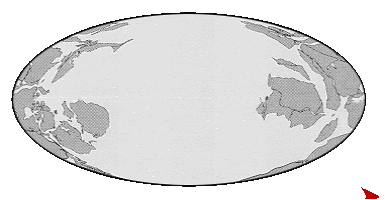Sulfate Burial Constraints on the Phanerozoic Sulfur Cycle Halevy, et al.
Science 20 July 2012: 331-334.DOI:10.1126/science.1220224
Rapid Variability of Seawater Chemistry Over the Past 130 Million Years Wortmann, et al.
Science 20 July 2012: 334-336.DOI:10.1126/science.1220656
Sulfur has hit the radar.
The dramatic tectonic event of India colliding with Eurasia and exposing Tethyian sediments to weathering has been around a while. It has been suggested that carbonate weathering sucked so much CO2 out of the atmosphere after the uplift of the Himalayas that global temperatures have fallen ever since.
Wortman shifts the discussion to sulphate in the form of gypsum and Halevy discusses sulphate reduction to sulphide by critters to form of pyrite, producing oxygen, and subsequent weathering of pyrite, consuming oxygen.
This is all very interesting in the context of the pattern I have alluded to where sea level regressions and transgressions seem linked to subsequent extinctions and isotope excursions.
Weathering of evaporite basins is nothing new in earth history. Chemical weathering uses carbonic acid or water to produce different alkaline or haline salts from the evaporites.

Sea floor isochrons are analogous to tree rings. Note how unusually large the growth is between 30 and 60 mya.
I think all the hollywood focus on the collision of India and Eurasia misses half of the equation. India didn’t just float into Eurasia, it was pushed, maybe even hurled. Seafloor isochrons show an extraordinary acceleration in spreading along a short section of ridge bounded by massive transform faults. Volcanic production of carbon and sulfur oxides from this spreading must surely have counteracted the weathering.






